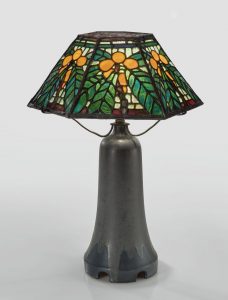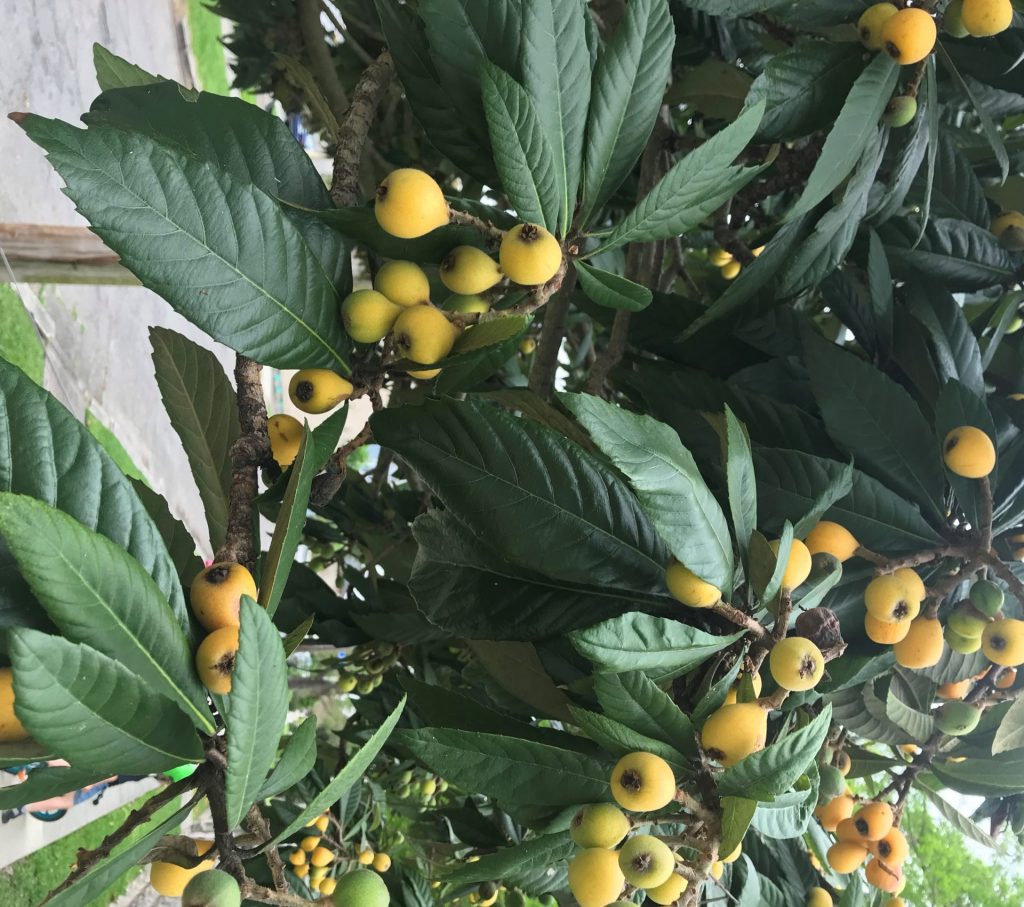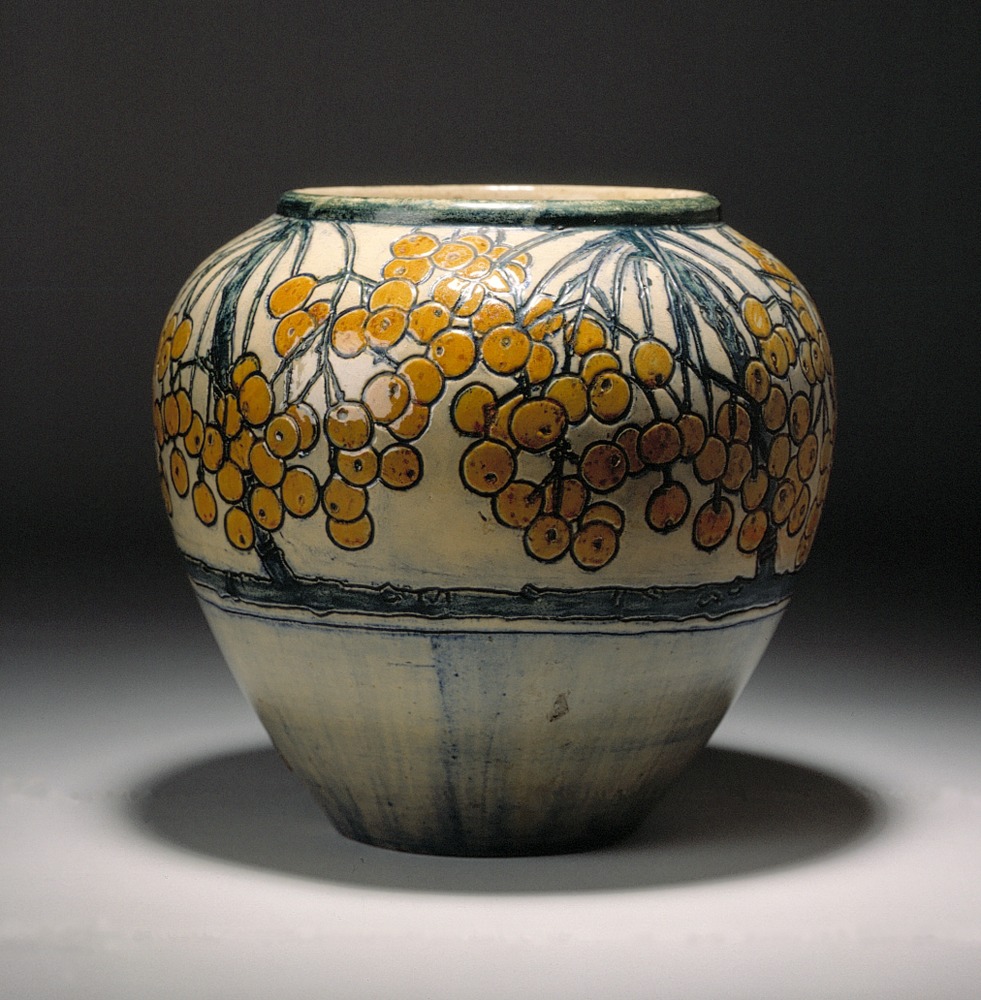From 1895 to 1940 Newcomb College Pottery gave young New Orleans women the skills they needed to reputably support themselves as artists. Mostly remembered today for coveted ceramic vases and bowls inspired by Louisiana’s natural scenery, Newcomb’s student curriculum also included bookbinding, textiles, metal, and only rarely work in glass, like the shade of this Table Lamp in NOMA’s decorative arts collection.

Newcomb College Pottery (New Orleans, 1895–1940), “Loquat Fruit” Table Lamp, c. 1910. Leaded glass shade, glazed earthenware, bronze fittings; 22 ¼ in high. New Orleans Museum of Art, William McDonald Boles and Eva Carol Boles Fund, 2018.28
Aligned with the ideals of the turn-of-the-century Arts & Crafts movement, Newcomb’s Pottery was an early occurrence of an American “art pottery.” An art pottery emphasized the spirit and action of an individual maker’s handcraft, in contrast to factory production that was more common after the industrial revolution. Newcomb’s instructor for design Mary Sheerer (American, 1865–1954) declared that the pottery would make “a southern product, made of southern clays, by southern artists, decorated with southern subjects!” Looking to New Orleans parks and waterways, the women at Newcomb developed a stylized (simplified) design language including crepe myrtle, lilies, magnolias, freesia, yucca trees and oleanders. One of their most enduring designs is a dramatic full moon peeking through moss-draped trees in a bayou, glazed with the pottery’s well-known matte blue and green.
NOMA’s Table Lamp has a notably plain glazed ceramic base–a simple blue-gray dripping over blue—but its glass lampshade is vibrant. Featuring a plant found in New Orleans gardens, the hexagonal shade’s six leaded glass panels repeat a cluster of golden yellow Loquat fruits (also called Japanese Plums) framed by the plant’s distinctive elongated green leaves.
Lamps made by Newcomb are rare, and those few ceramic bases that retain their original shades are made of perforated brass or beadwork. Stunning examples are held in Tulane’s Newcomb Art Museum and The Historic New Orleans Collection. NOMA’s Table Lamp is the only known example of Newcomb’s brief experimentation in leaded-glass lamp shades. Glass was never a craft significantly practiced at Newcomb College, though glass work appeared in the school’s curriculum for 1907–1908 and again in 1910–1911. The Newcomb 1909–1910 bulletin included a small black and white image of a similar lamp with a glass shade, also featuring simplified loquat fruits. NOMA’s shade (like most glass) is not marked, but the lamp’s ceramic bottom is impressed with an NC (for Newcomb College) and an FR. The lamp’s singularity and this mark beg more questions than give us answers, as FR does not correspond with Newcomb’s published lists of maker, clay body, or date marks.
Ultimately, Newcomb College’s program was one of the most successful American art potteries, enjoying an almost fifty-year existence producing 70,000 unique works of art. These artworks—from the “Moonlight and Moss” glaze pattern, to vases with stylized chinaberries, to the mysterious loquat glass lamp shade–celebrate the individual hand of their makers, while living within Newcomb’s cohesive design language of the verdant Gulf Coast.
—Mel Buchanan, RosaMary Curator of Decorative Arts and Design
NOMA is committed to uniting, inspiring, and engaging diverse communities and cultures through the arts — now more than ever. You can support NOMA’s staff during these uncertain times as they work hard to produce virtual content to keep our community connected, care for our permanent collection during the museum’s closure, and prepare to reopen our doors.



